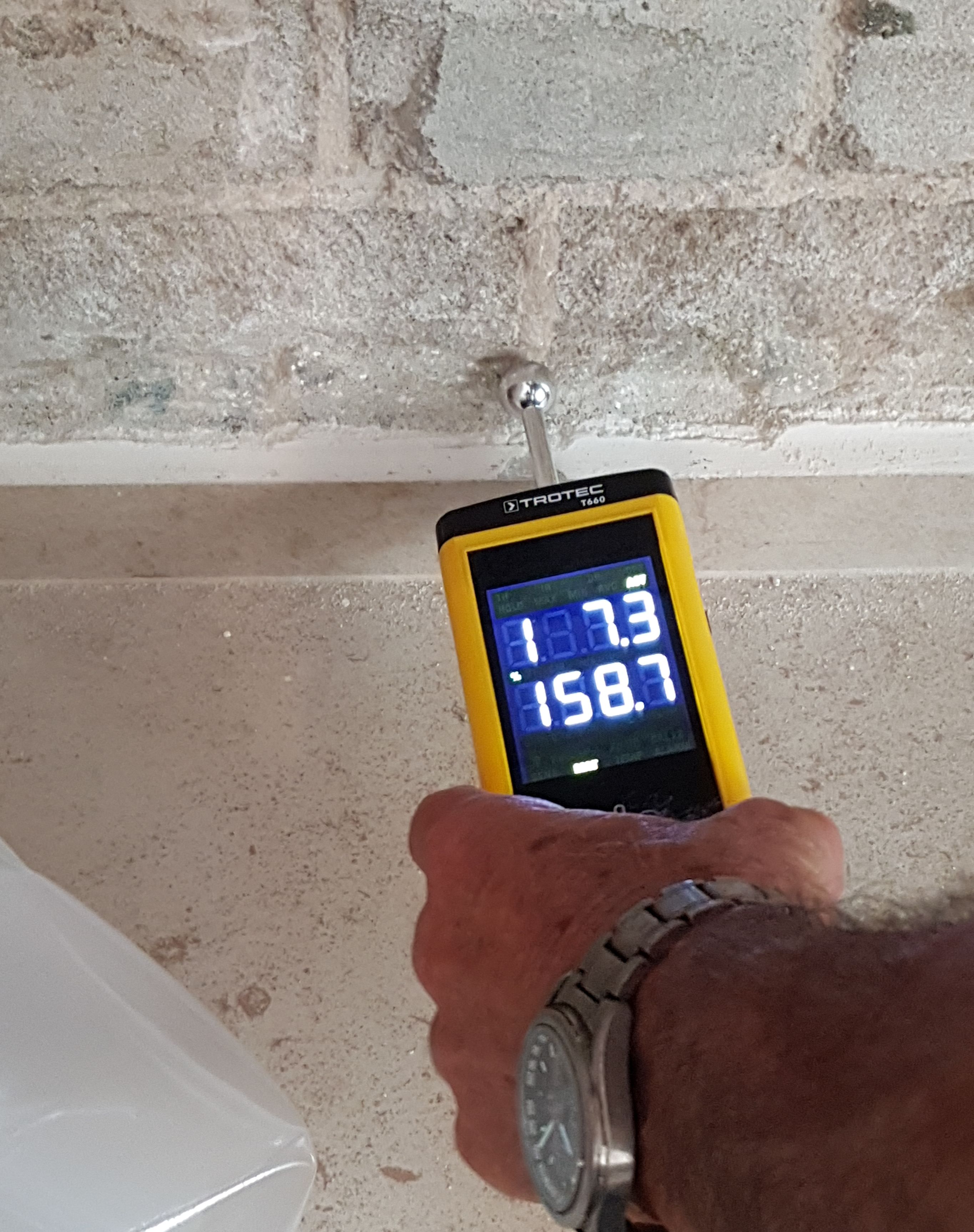The Scientific Research Behind Moisture Meters: How They Function and Why They're Necessary
The Scientific Research Behind Moisture Meters: How They Function and Why They're Necessary
Blog Article
Comprehending the Relevance of a Moisture Meter in Avoiding Mold and Water Damages in Your Home
In the realm of home maintenance, the visibility of wetness can usually be a quiet yet awesome adversary, capable of causing pervasive mold and mildew growth and dangerous water damages if left unattended. Understanding the importance of a moisture meter in this battle is not just an option but a strategic need.
Relevance of Moisture Discovery
Efficient wetness discovery methods are important for protecting residential or commercial properties and preventing potential mold and mildew growth and water damages. Wetness can seep into numerous building products, leading to structural concerns and carcinogen. By making use of a moisture meter, homeowner can proactively recognize areas vulnerable to excess wetness, permitting prompt treatment and reduction methods.
Moisture meters give accurate analyses of dampness levels in different products such as timber, concrete, and drywall. This data assists in determining areas of issue, also in hard-to-reach or concealed areas. Early detection of moisture buildup enables prompt repair work or modifications to protect against further damages.

Just How Moisture Meters Work
Moisture meters play a crucial function in the proactive recognition of excess dampness, helping in the prevention of prospective mold and mildew development and water damages by offering precise readings of moisture degrees in different building products. Some advanced dampness meters pin both incorporate and pinless modern technologies for detailed dampness detection. Understanding just how moisture meters function is vital for timely and precise moisture level analyses, allowing efficient preventive actions versus mold and mildew and water damage.
Finding Early Indication
Upon first inspection of a residential property, recognizing subtle indications of excess moisture comes to be crucial in the very early detection of potential mold and mildew growth and water damages. Some usual very early indication consist of mildewy smells, water discolorations on ceilings or wall surfaces, peeling off paint or wallpaper, and warped or discolored surfaces. Musty odors often indicate the presence of mold or mold, also if no noticeable signs appear. Water stains can indicate leakages or infiltration, while peeling paint or wallpaper may be a result of dampness compromising the adhesion of these materials to the surface. Distorted or blemished surfaces, such as distorting floorboards or stained drywall, are clear indications of water damage. Furthermore, a rise in allergic reaction symptoms or breathing issues amongst residents may recommend the existence of mold and mildew because of excess wetness. By without delay recognizing and resolving these early caution signs, homeowners can mitigate the risk of substantial mold development and water damages in their residential properties.
Protecting Against Mold Development
Acknowledging early indication of excess wetness within a home not only makes it possible for prompt discovery of prospective mold and mildew growth and water damages however likewise works as a proactive step in stopping the proliferation of mold. To properly prevent mold and mildew growth, it is vital to attend to any type of resources of dampness without delay. This can consist of dealing with leaks in pipes, roofings, or windows, making certain proper ventilation in damp areas see this website like restrooms and kitchens, and using dehumidifiers in high-humidity rooms. Consistently evaluating and maintaining the property's pipes, roofing system, and rain gutters can additionally assist in avoiding water intrusion that can cause mold and mildew growth.
In enhancement to addressing moisture sources, maintaining interior humidity degrees listed below 60% can dramatically inhibit mold and mildew growth. Correct ventilation, sufficient insulation, and using air conditioners or fans can assist manage indoor moisture levels. Keeping track of moisture levels in areas susceptible to dampness, such as basements and creep spaces, using a dampness meter can likewise aid in very early discovery of raised dampness degrees and prospective mold development. By taking proactive measures to avoid excess wetness and mold and mildew growth, home owners can guard their property and indoor air quality.
Advantages of Regular Monitoring
Regular tracking of wetness levels in a residential or commercial property can play a crucial duty in maintaining a healthy interior setting and protecting against possible mold and water damage. By frequently examining wetness degrees, property owners can detect any issues promptly and take required activities to wikipedia reference avoid mold and mildew development and water damage. Among the essential benefits of regular monitoring is very early discovery. By recognizing and resolving high wetness degrees early, homeowners can step in before mold and mildew has the opportunity to spread out and establish. This positive approach can save both time and cash in the long run by stopping substantial mold and mildew removal and fixing costs.
In addition, regular surveillance enables homeowners to track patterns and patterns in dampness degrees gradually. By developing a standard and tracking adjustments, individuals can identify any type of areas of problem or prospective susceptabilities in the building's structure. This data-driven strategy enables targeted interventions and maintenance efforts to address underlying issues before they escalate into even more substantial issues. Ultimately, the consistent tracking of wetness levels empowers property owners to safeguard their residential or commercial property, secure their health, and protect the honesty of their indoor setting.

Verdict

By making use of a moisture meter, residential property proprietors can proactively determine locations vulnerable to excess moisture, enabling for timely intervention and reduction techniques.

Monitoring moisture levels in areas vulnerable to moisture, such as cellars and crawl rooms, using a wetness meter can likewise aid in very early detection of raised wetness degrees and potential mold growth. (Moisture Meter)
Report this page